Finca del Secretario is a Roman industrial site in Fuengirola, Malaga province, Andalucia that includes a fish salting area, ovens and a thermal complex
By Nick Nutter | Updated 11 Nov 2022 | Málaga | Places To Go |
Login to add to YOUR Favourites or Read Later
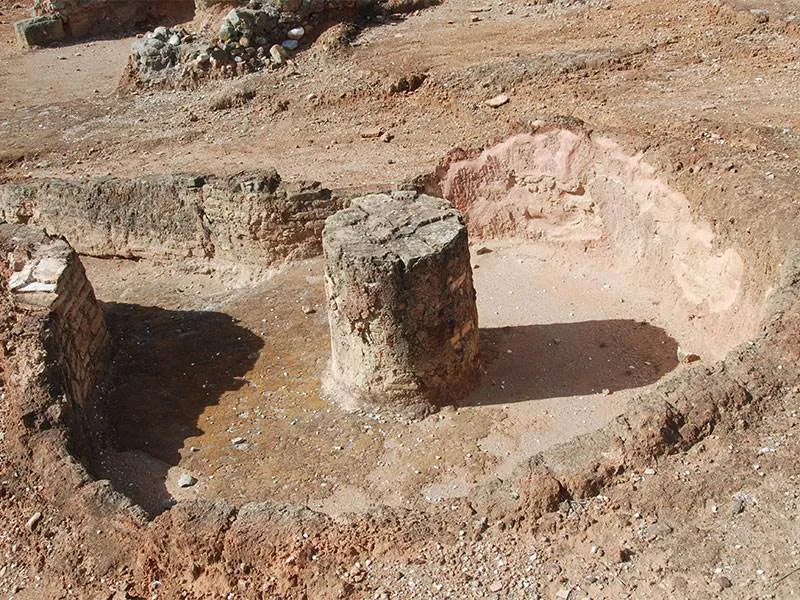
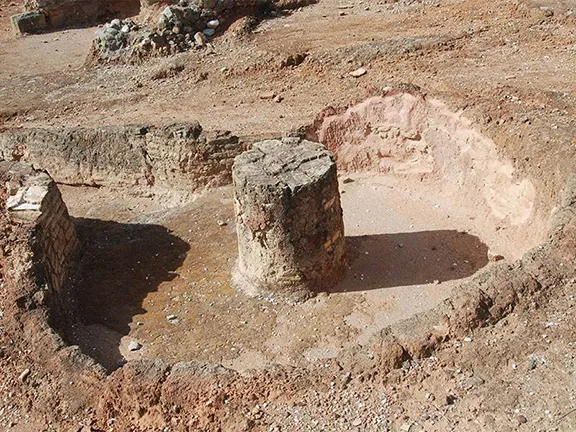
One oven
During the Roman period, the Andalucian landscape was dotted with what, for many years, have been described as villas. The words Roman villa fail to adequately portray the reality, bringing to mind a single storey, square structure, built around a central courtyard. While the word villa may describe an upmarket Roman habitation in an urban setting, it often does not represent a well to do Roman family’s home in the countryside or by the sea. For that we should use the word estate, or in Spanish, Finca, or as the Romans would say, Latifundia, for some were far more than mere habitations.
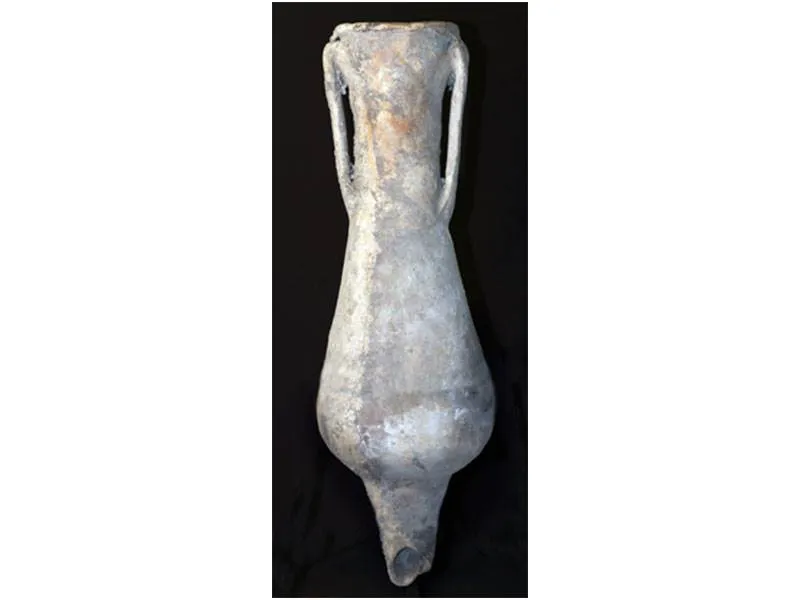
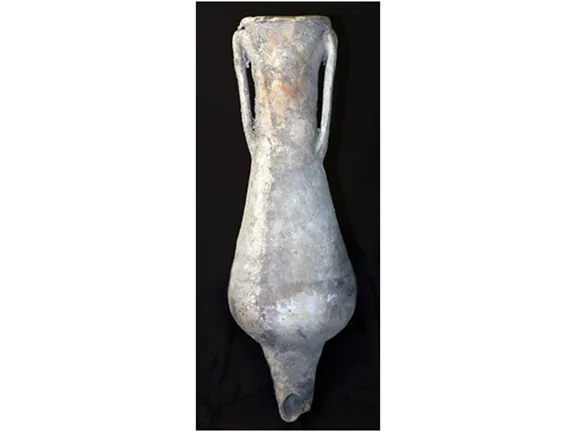
Beltran IIA amphora
The Finca del Secretario is in Fuengirola, at the north end of what is now a busy resort town. In the 1st century AD, the time from which this site dates, the Finca was just above sea level, close to the shore, a couple of kilometres north of a small, fortified, settlement called Suel.
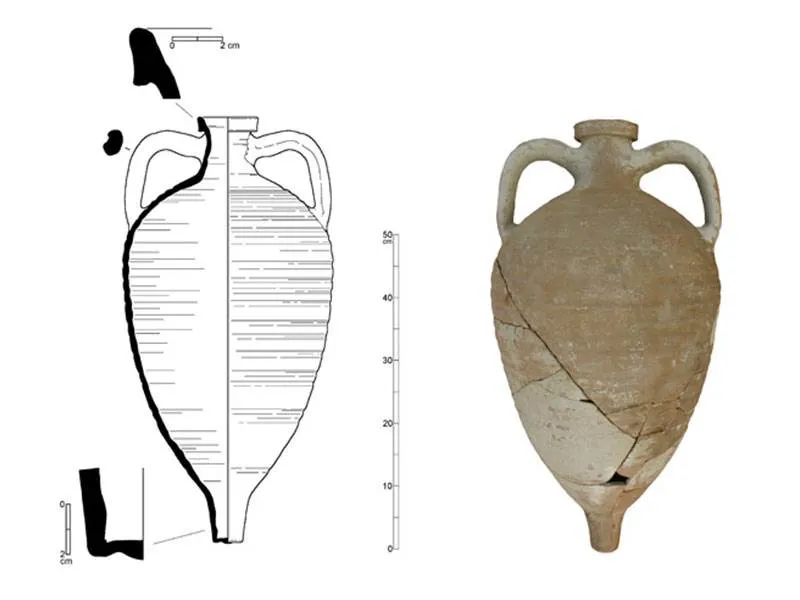
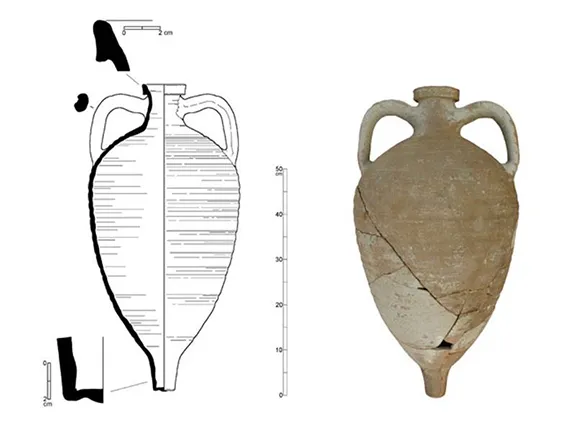
Dressel 30 amphora
The archaeological site is divided into three parts, an industrial area, a baths area and a villa. The villa itself is separated from the other sections by a road and is not yet excavated. Its presence was determined during the building of a bypass; it’s connection to the industrial area presumed by the existence of steps between the lower industrial level and the villa level.
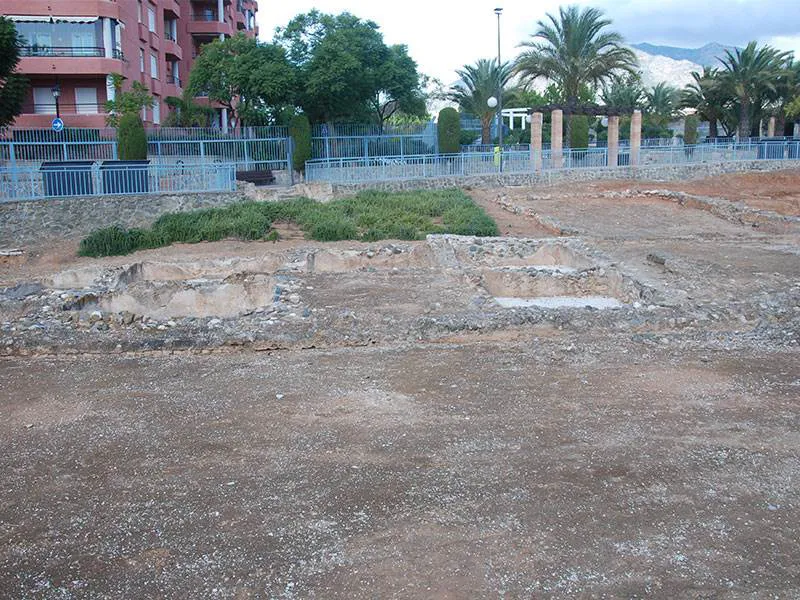
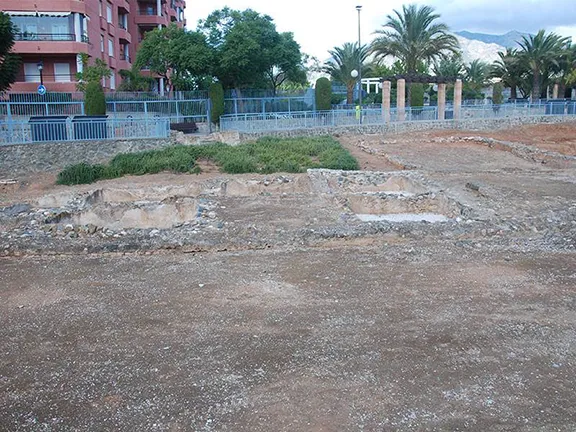
Fish salting area
The industrial area has two components, a fish salting area and a pottery firing area. The fish salting area consists of three rooms that have been tentatively identified as a storage room, judging by the abundant remains of amphorae found there, a preparation room and an entrance hall accessed by steps from the exterior that has an, as yet, unknown function. In addition, there are six large salting tanks and four smaller tanks. These would have been used for the salting of fish and the preparation of garum, a fish sauce. It should be emphasised that the words large and small are relative, the whole array of tanks and rooms occupies a space of perhaps 500 square metres with the tanks taking up about one third of the area, hardly on the scale of the fish salting factories at Baelo Claudia on the Atlantic coast or even those at Castillo de la Duquesa, 70 kilometres south down the coast from Fuengirola.
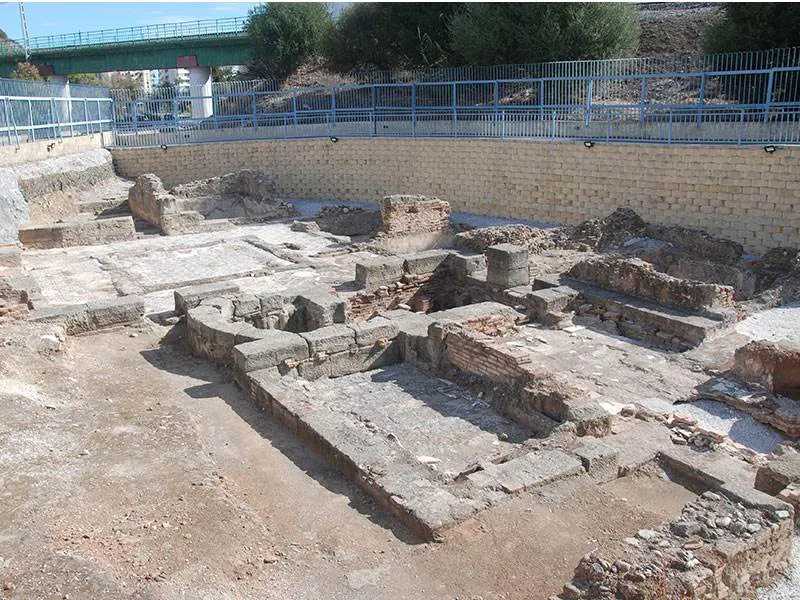
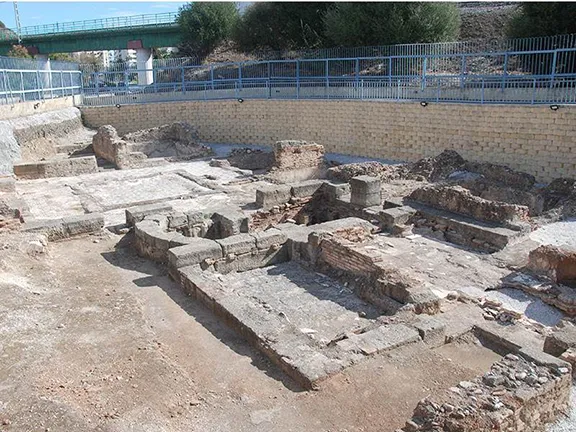
Bath area
It is barely possible to read any text about Roman life without coming across a reference to the fish sauce called garum. There were many recipes for the sauce, and the flavour could be varied by adding different ingredients, oysters, shrimps and other molluscs were favourites. This basic recipe is taken from the ‘Geoponic’, a Greek treatise on agriculture written during the period of the Roman Empire.
Viscera of fish is put in a container and it is salted; small fish are added (some species such as anchovies and red mullet are described). All that is seasoned with salt in the same way and it is left to come down in the sun, stirring it frequently. Once the mixture is reduced by the heat of the sun, the garum will be separated in the following way.
(em>In the container we sink a large and thick holed basket. The garum penetrates through the small holes in the basket and this filtered liquid called liquamen is collected. The remaining waste constitutes the allec.
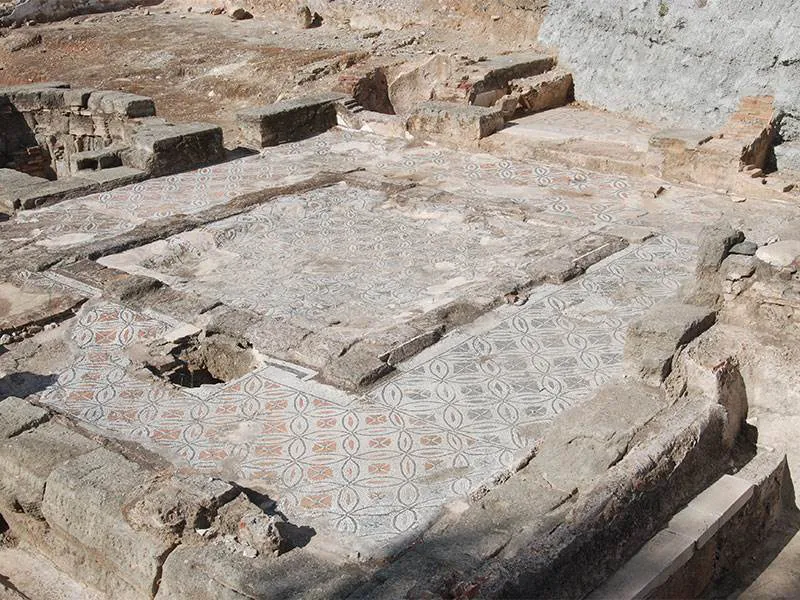
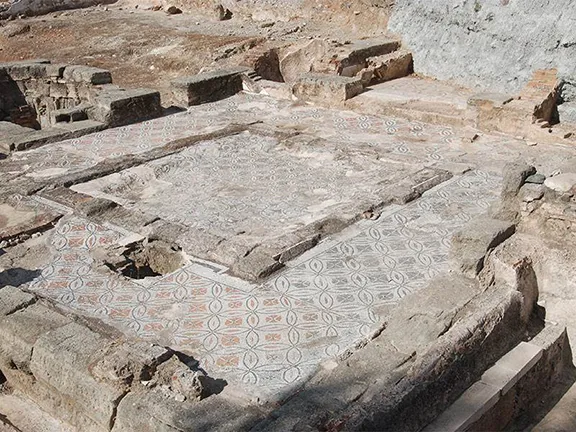
Mosaic floor in reception area
The reducing process could take several weeks and was sometimes accelerated by taking the contents of the tank in pots and warming it in a hot room over open fires. The large tanks were filled first with the fish/salt mixture, and that was allowed to reduce down. The reduced mixture was moved to a smaller tank to continue processing whilst the large tank would be refilled. It was an early form of assembly line.
The second part of the industrial area is the pottery firing plant. There are four ovens alongside the fish salting area. Remains of amphorae of types Beltran IIA, Dressel 30 and Keay XXV indicate the operators were manufacturing amphorae for the transportation of salted fish, garum and other perishable food such as olives, olive oil and grain. The ovens were also turning out domestic ware similar to African pottery of the period, casseroles with lids, and plates.
Beltran IIA is a long cylindrical amphora, manufactured at many sites on the Baetic coast throughout the 1st and 2nd centuries AD.
Dressel 30 amphora are more rounded. Only a few have been found; one at Cadiz, six from Carteia, a dozen in the Roman theatre at Malaga and fifteen from the factory of El Majuelo in Almunecar. There are only three sites, all on the coast of Andalucia, where the manufacture of this type has been recorded, Finca del Secretario, La Loma de Ceres and in Los Matagallares, the latter two both in Granada province.
Keay XXV amphorae were in use during the 4th and 5th centuries AD. The origin of this pattern was initially thought to be exclusively Tunisian however, in recent years, Keay XXV pattern amphorae have been found at manufacturing sites in Spain; at Mazarron in Murcia, Alicante in Valencia and now at Finca del Secretario in Andalucia.
The thermal complex is only about 30 metres from the industrial area and slightly less from the villa. It occupied a space of 500 square metres and was accessed via a staircase. There are areas for cold baths and heated warm baths. Reception rooms were decorated with mosaics floors, and there are traces of painted decorations on the remaining walls.
Until the 2nd century BC, Romans tended to wash daily and only bathe once per week. The bath was often in a room alongside the kitchen so that it could be conveniently filled with hot water. As the use of the bath increased, wealthy Romans started to build private baths, imitating the Greek pattern. The next development was the construction of privately-owned baths to which the public paid an admittance charge. From there the large public baths became more common. Some were built by wealthy citizens, some by private companies who profited from the enterprise, and some by the Emperors.
Over time the use of the baths was ritualised. During the 2nd century BC, Romans were modest people. Nudity was not frequent, males and females bathed at different times. Over time these modesties relaxed and mixed bathing became popular. This led to several scandals, to the extent that even emperors such as Hadrian and Marcus Aurelius became concerned and tried, without success, to reimpose timetables for men and women. The problem was not solved until the Christian era, when, at the Council of Laodicea (320 AD), women were prohibited the use of the baths entirely.
The archaeological evidence indicates that Finca del Secretario was the home of a wealthy Roman, whether native-born or born in Rome is not known. The relatively small size of the fish processing plant would indicate a privately run enterprise. The family made their domestic pottery as well as the amphorae needed to contain the produce from the fish processing plant. The size of the baths area would indicate the family used it and perhaps occasional guests.
Distribution of amphorae would indicate that some, or even most of, the produce from the Finca was exported. Suel was a small port only a short distance away.
It is interesting to speculate that the owner of the Finca also owned fishing boats to supply the fish processing tanks. That question may never be resolved. However, further excavation in the villa area may show whether or not the owners, over a period of some 400 years, extended their activities to include agriculture and animal husbandry.
The site is open to the public, and it has an interpretation centre and a café. Entrance is free.
In November 2022, archaeological works next to Sohail Castle, site of the Roman port of Suel, revealed the 700 square metre remains of a public building with marble floors, walls and pedestals that could have supported statues. The quality of the construction reinforces the view that Suel was a major part of the Roman commercial trading network on the Mediterranean coast. Indications are that Finca del Secretario was an important part of the industrial and agricultural industry in the area, importing and exporting products to all parts of the Roman Empire.
For opening times at Finca del Secretario, click here